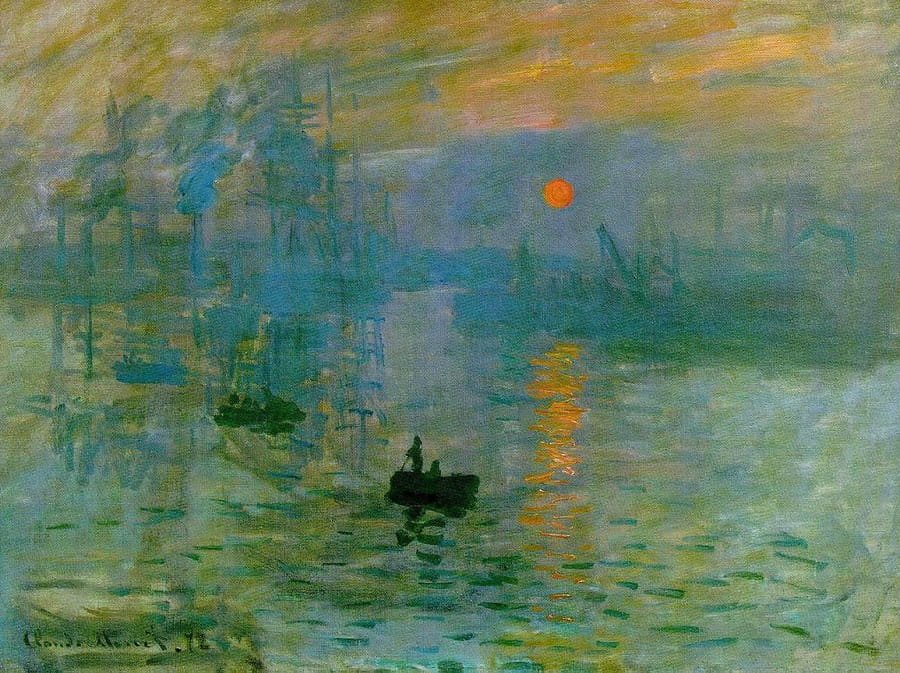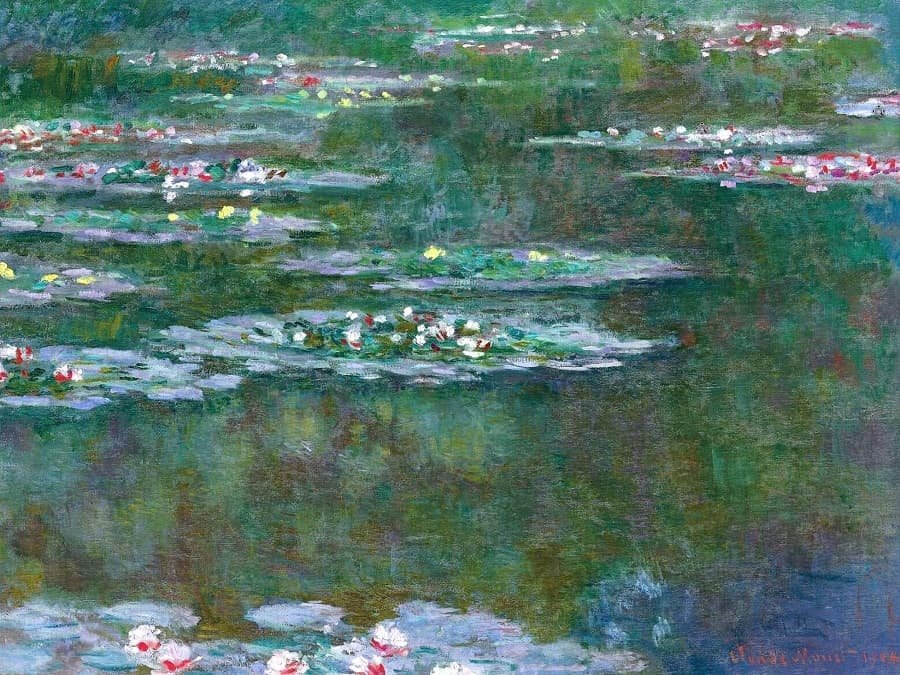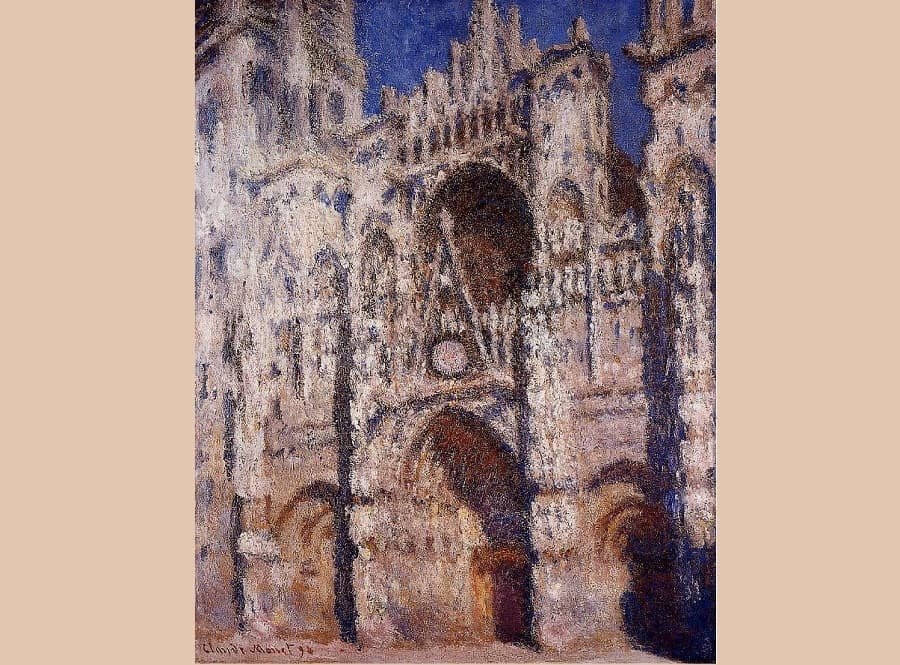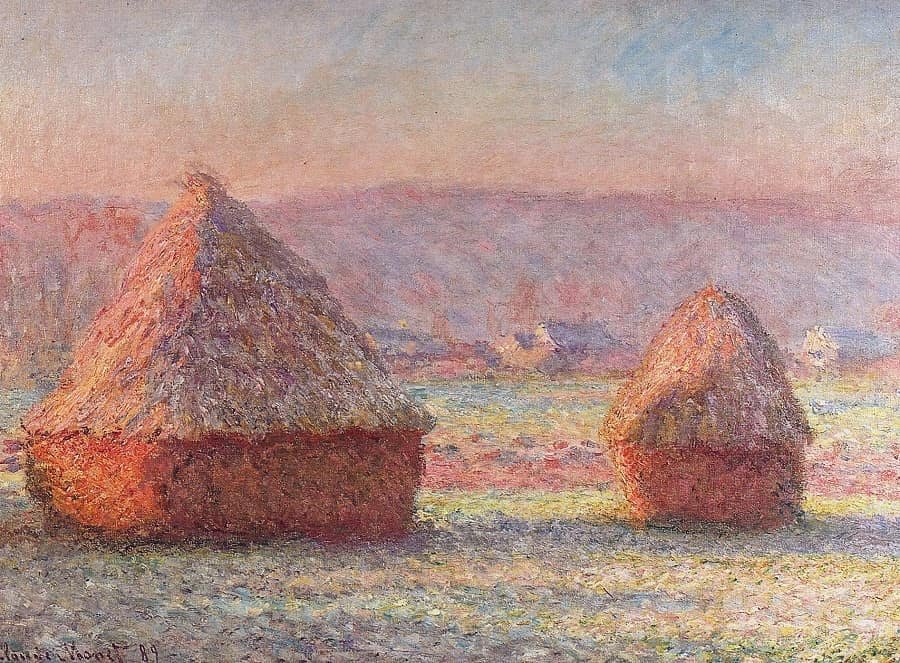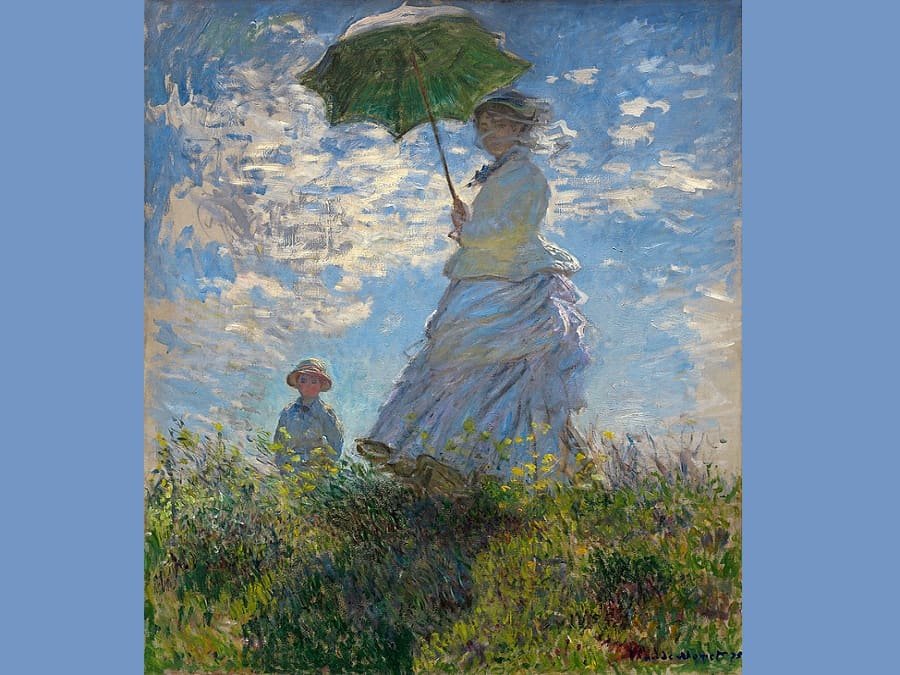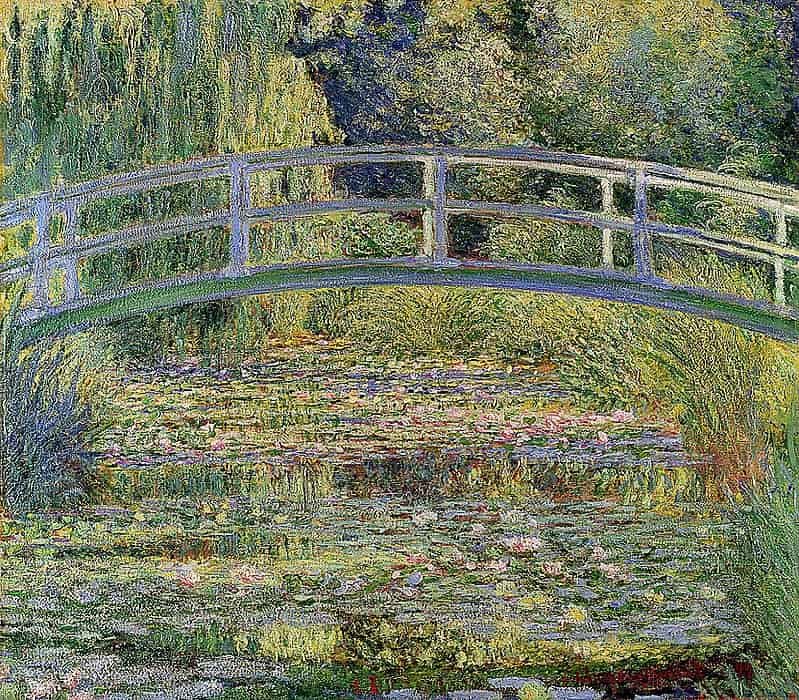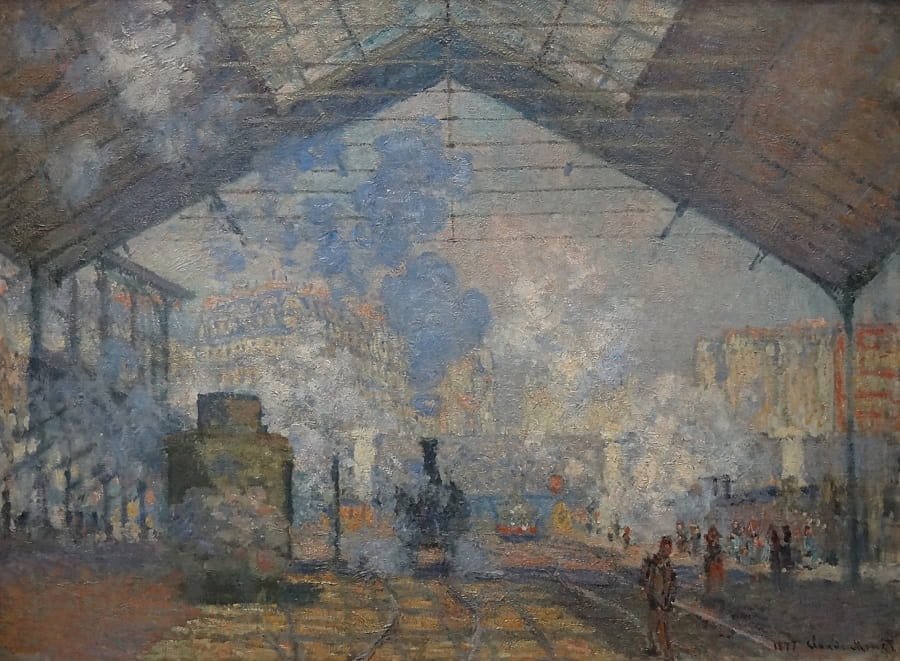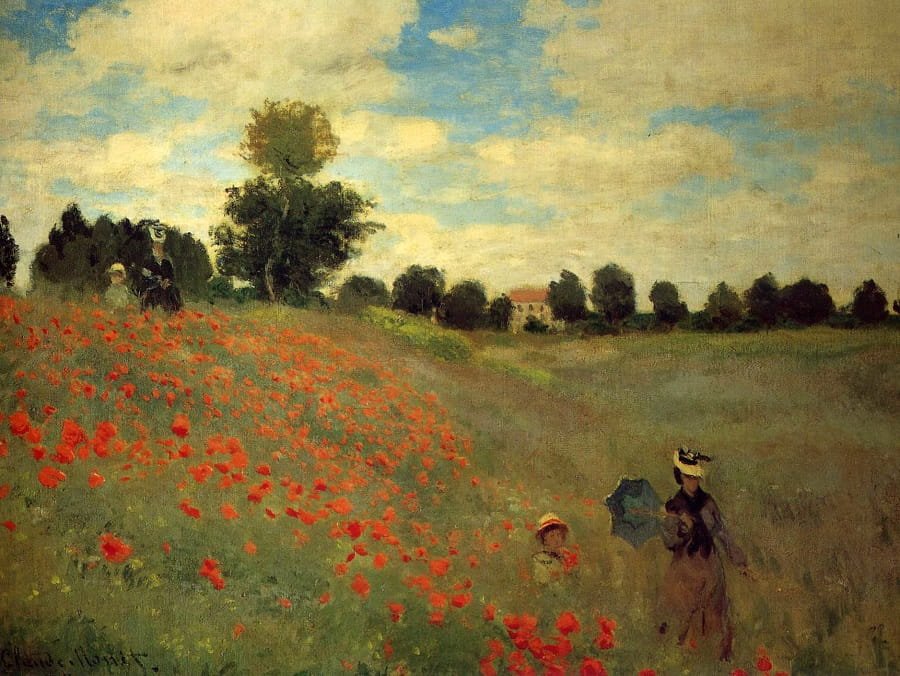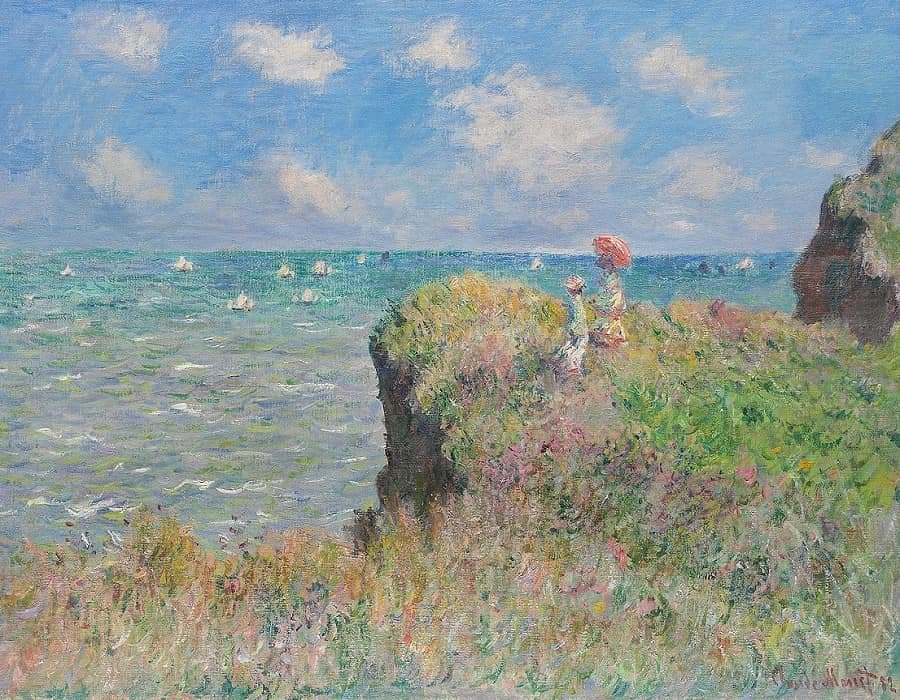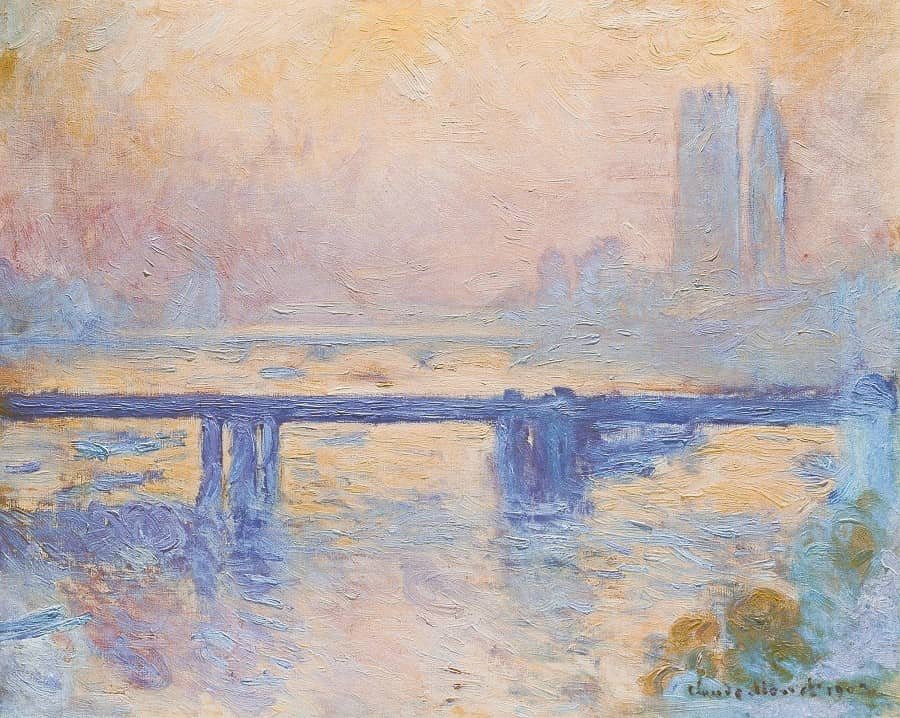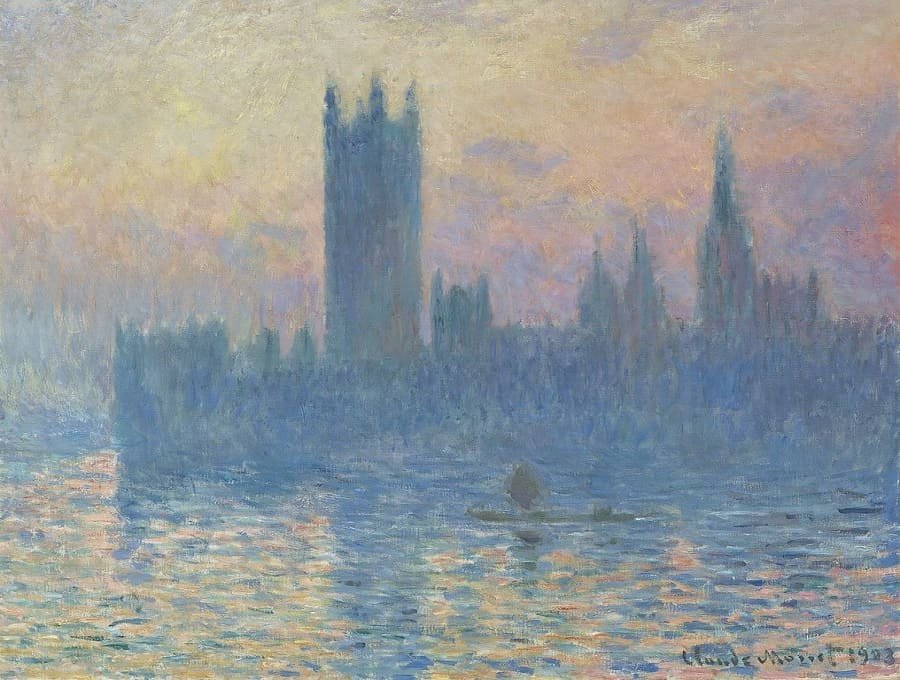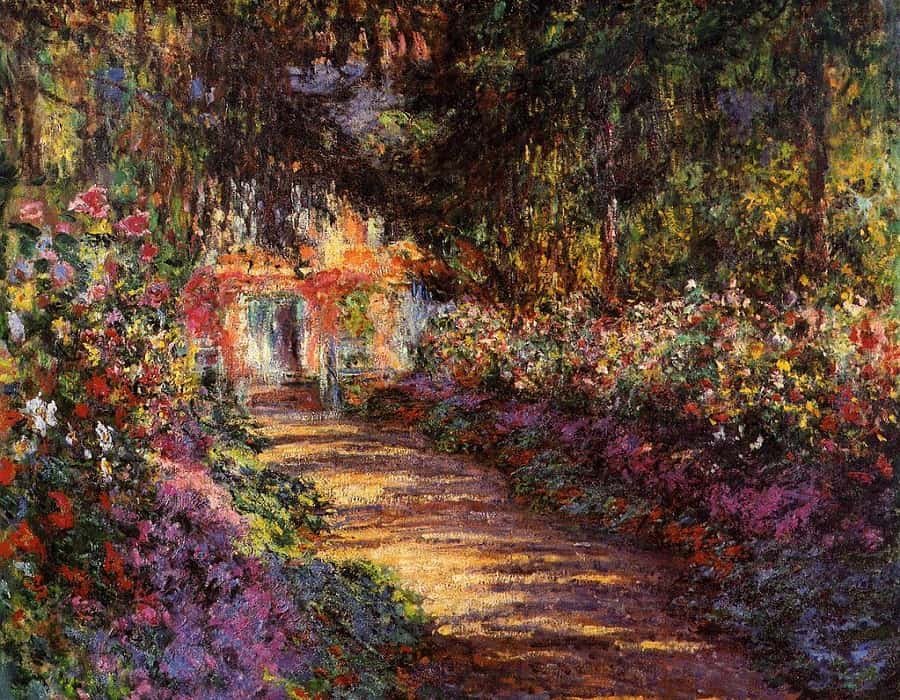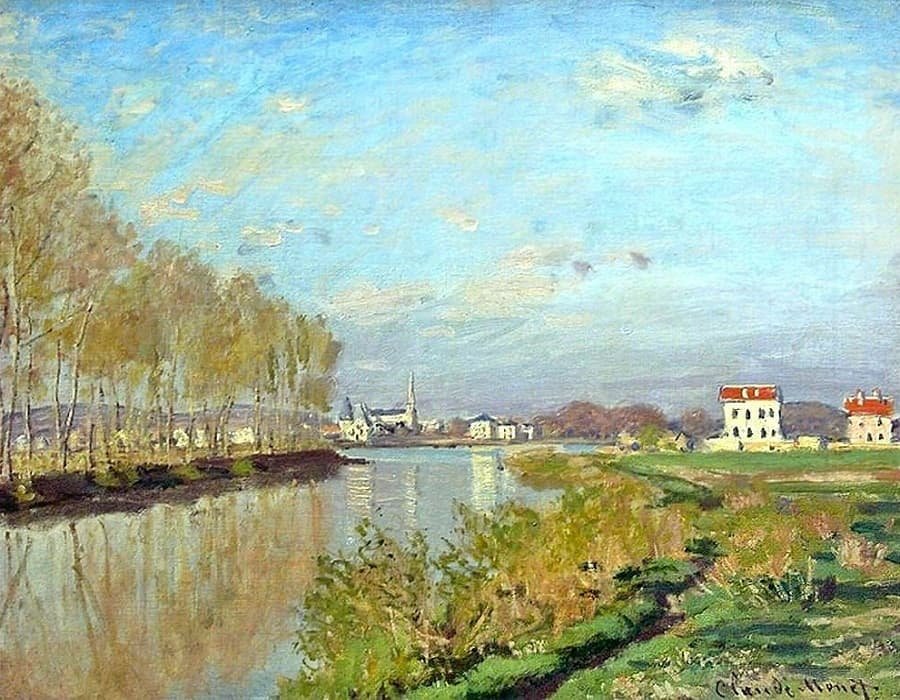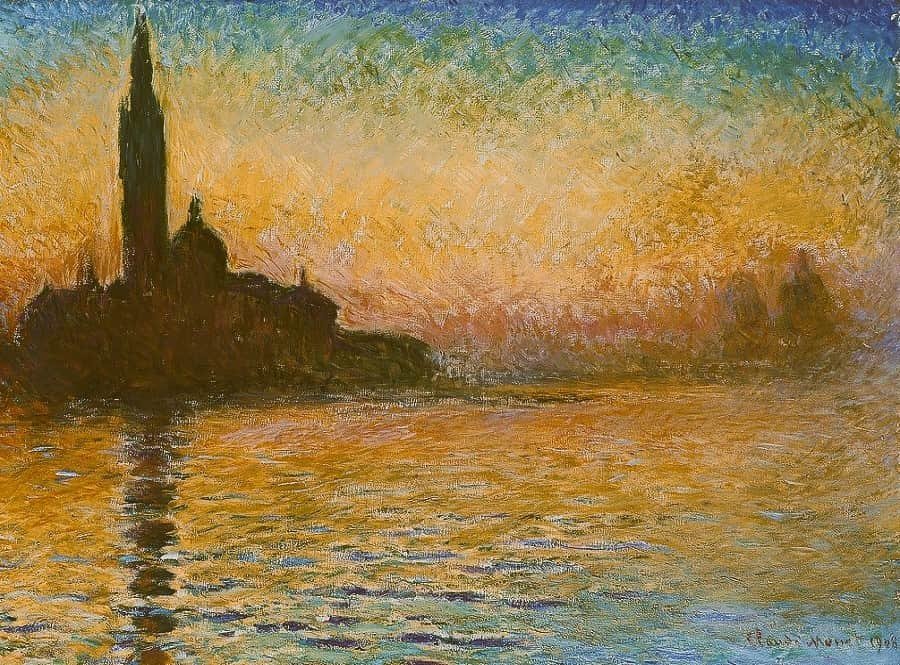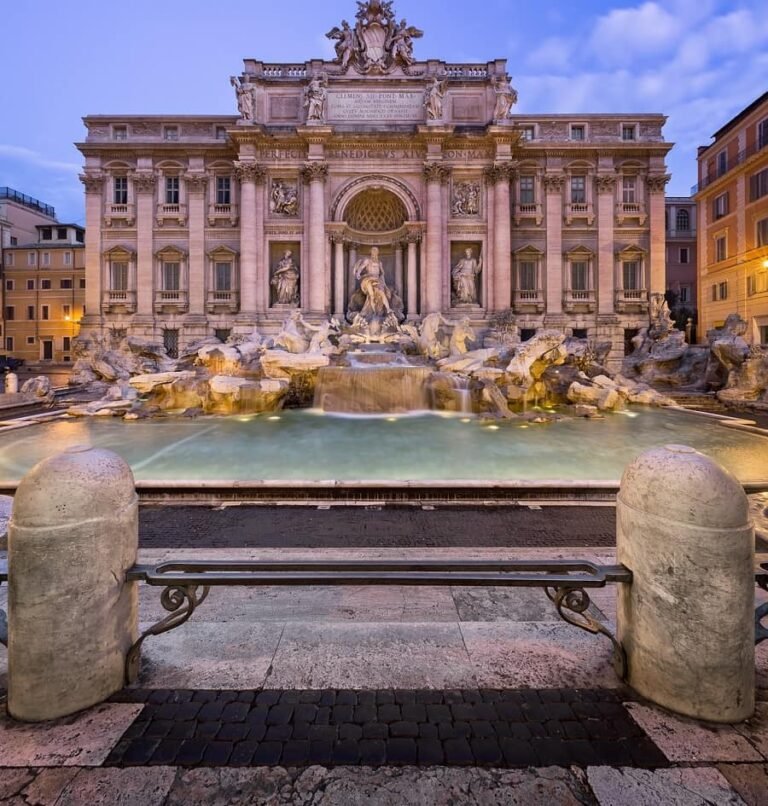Top 15 Most Famous Monet Paintings
Last Updated on 27th August 2023 by admin
French painter Claude Monet has become famous for being one of the pioneers of the Impressionist movement in the late 19th century. His unique aesthetic and expert brushwork revolutionised the art world and changed the history of painting. This article will explore some of Monet’s most famous paintings, each of which displays his remarkable creativity and captures the spirit of Impressionism.
The Life and Times of Claude Monet
Before we dive into the exquisite masterpieces, let’s take a moment to understand the life and times of the brilliant artist behind them. Claude Monet was born on November 14, 1840, in Paris, France. He showed a deep love of painting at an early age, which ultimately inspired him to enrol at the Le Havre Secondary School of the Arts. Monet’s artistic journey took him through various phases, but it was his mastery of the Impressionist style that propelled him to fame.
He improved his abilities under the direction of famous artists and over time created his own distinctive style. Early paintings by Monet established the Impressionist style by showing the artist’s fascination with light, colour, and the fleeting quality of perception. Here are some of the most famous paintings by Claude Monet:
1) “Impression, Sunrise”
The “Impression, Sunrise” is a famous Claude Monet paintings, and has a significant place in the history of art. The Impressionist movement is recognised as having been defined by this magnificent masterpiece, which was created in 1872. Of the most famous Monet paintings, this is perhaps the most special.
The artwork depicts the harbour at Le Havre at dawn and uses freehand brushstrokes and brilliant colours to capture the ambiance and movement of light, which making it one of the Claude Monet’s most popular Paintings of all time.
As the sun rises, it diffusely illuminates the surrounding boats and the ocean, giving the image an almost hazy appearance. Monet’s innovative approach to capturing the fleeting moment and his emphasis on the artist’s subjective perception challenged the traditional standards of art at the time.
“Impression, Sunrise” displays the fundamental ideas of impressionism with a concentration on capturing the fleeting elements of light, mood, and the artist’s first impression. This iconic painting continues to inspire and captivate art enthusiasts worldwide, solidifying Monet’s place as a master of the Impressionist movement.
2) “Water Lilies” Series”
Claude Monet’s “Water Lilies” series offers a mesmerising look into the artist’s strong bond with nature. This series, which Monet produced in the late 19th and the early 20th centuries, shows his fascination with the connection of water, light, and plant.
Through these paintings, Monet invites viewers into his personal oasis, the water garden he cultivated at his home in Giverny. Monet captures the peaceful appeal of water lilies floating on a pond’s surface in his “Water Lilies” series.
He depicts changing reflections and the delicate balance between light and shadow with his signature free brushstrokes and brilliant colours. The peaceful atmosphere of the paintings invites viewers to enter the enchanting the world of nature.
With his “Water Lilies” series, Monet challenged traditional standards in the art world by attempting to capture a scene’s essence rather than a thorough reproduction of it. These pieces have left a lasting impression, inspiring subsequent generations of painters and captivating viewers of masterpieces with their peaceful depiction of nature.
3) “Rouen Cathedral” Series
“Rouen Cathedral” is a remarkable series of paintings by Claude Monet that showcases his fascination with capturing the ever-changing light and atmosphere on the façade of the Rouen Cathedral in Normandy. Created in the late 19th century, this series represent Monet’s mastery in depicting the effects of light on architecture.
In the “Rouen Cathedral” series, Monet portrays the iconic cathedral from various angles and at different times of day, each painting capturing a unique atmospheric quality. The play of light and shadow on the intricately detailed façade of the cathedral is depicted through Monet’s bold brushwork and a vivid color palette.
Through his artistic interpretation, Monet transforms the architectural structure into a visual symphony, where light dances across the surface, revealing new perspectives and moods with each painting. The series serves as a testament to Monet’s ability to capture the ephemeral qualities of light and the ever-changing nature of the environment.
The “Rouen Cathedral” series by Monet invites viewers to appreciate the beauty of one of France’s most famous attractions or landmarks through the artist’s eyes. It exhibits Monet’s commitment to capturing a subject’s essence as well as his talent for transforming ordinary things into a realm of astonishing beauty and visual poetry.
4) “Haystacks” Series
The “Haystacks” series by Claude Monet is a testament to the artist’s fascination with the effects of changing seasons on the same subject. These paintings, which were produced between 1890 and 1891, reveal Monet’s remarkable sense of light, atmosphere, and the nuances of nature.
In the “Haystacks” series, Monet depicts haystacks in various weather conditions and times of day. Through his brushwork and use of color, he captures the shifting hues and textures that accompany the changing seasons. The haystacks serve as anchors within the landscape, while the surrounding elements, such as sky, foliage, and weather, provide a dynamic backdrop.
Monet’s exploration of the haystacks allows viewers to witness the ever-changing qualities of light and atmosphere, as well as the impact of different seasons on the natural world. The series reveals Monet’s dedication to capturing the fleeting essence of nature and his ability to convey the emotions evoked by the shifting beauty of the rural landscape.
The “Haystacks” series shows testament to Monet’s skill in capturing the effects of changing seasons and demonstrates his close relationship with nature as well as his dedication to capturing the fleeting elements of light and mood.
5) “Woman with a Parasol” (Madame Monet and Her Son)
“Woman with a Parasol” (Madame Monet and Her Son) is one of the famous Monet paintings that offers a glimpse into the world of serenity and familial connection. Created in 1875, this masterpiece portrays Monet’s wife, Camille, and their young son, Jean, in a spontaneous moment captured in a landscape setting.
The painting exudes a sense of tranquility and serenity, with Camille depicted as a graceful figure holding a parasol, shielding herself and her son from the sun. The loose brushstrokes and vibrant colors characteristic of Monet’s style bring a sense of movement and liveliness to the scene.
Monet’s portrayal of his wife and son in the natural environment reflects his ability to infuse everyday moments with a profound sense of beauty and harmony. The painting invites viewers to share in the intimacy and tenderness of the mother-child relationship, evoking emotions of love and protection.
“Woman with a Parasol” (Madame Monet and Her Son) is a testament to Monet’s skill in capturing not only the physical likeness of his subjects but also their inner essence and the emotions they evoke. It stands as a testament to the enduring power of portraiture to convey the depth of human connections and the serenity found within them.
6) “The Japanese Bridge”
“The Japanese Bridge” is a captivating and one of the famous Monet paintings that invites viewers into a world of tranquility amidst nature. this beautiful painting was Created in 1899, and this artwork showcases Monet’s deep fascination with Japanese art and culture, which greatly influenced his artistic style.
Monet paints a lovely bridge in his Giverny garden in “The Japanese Bridge,” which is set there. As it blends into the landscape without standing out and reflects in the serene waters below, the bridge emerges as a focal point. The image captures the mood of a peaceful haven with an air of harmony and tranquilly.
Monet’s use of vibrant colors and delicate brushstrokes brings the scene to life, creating a dreamlike atmosphere. The play of light and shadow, along with the soft blending of colors, adds a touch of mystery and enchantment to the painting.
“The Japanese Bridge” transports viewers to a tranquil world where nature and man-made elements coexist harmoniously. It embodies Monet’s appreciation for the simple beauty found in everyday scenes and invites contemplation and introspection.
This masterpiece stands as a testament to Monet’s ability to capture the ethereal qualities of light, atmosphere, and the serene beauty of nature. “The Japanese Bridge” continues to captivate audiences, offering a moment of respite and tranquility amidst the chaos of the world.
7) “The Gare Saint-Lazare”
“The Gare Saint-Lazare” is a notable painting by Claude Monet that captures the spirit of modernity and urban life in late 19th-century Paris. The painting was created in 1877, this artwork depicts the bustling atmosphere of the city’s railway station.
In “The Gare Saint-Lazare,” Monet skillfully portrays the energy and dynamism of the bustling train station. Through vibrant brushstrokes and careful attention to light and movement, he brings the scene to life. The steam from the locomotives, the bustling crowds, and the architectural elements of the station are captured with a sense of immediacy and realism.
The painting not only showcases the technological advancements of the time but also represents a shift in society towards urbanization and modern living. Monet’s ability to capture the essence of the bustling cityscape reflects his deep connection with the changing world around him.
“The Gare Saint-Lazare” is one of the famous Monet paintings and stands as a testament to Monet’s artistic vision and his fascination with the evolving urban landscape. It serves as a snapshot of a specific time and place, immersing viewers in the vibrancy of Parisian life during the Industrial Revolution.
8) “Poppy Field”
“Poppy Field” is a vibrant and joyous painting by Claude Monet that brings forth a captivating splash of color. Created in the late 19th century, this artwork showcases Monet’s ability to evoke emotions through his skillful use of color and composition.
In “Poppy Field,” Monet presents a meadow brimming with poppies in full bloom. The vivid reds and greens create a lively and energetic atmosphere, radiating a sense of joy and vitality. The loose brushstrokes and spontaneous application of paint contribute to the sense of movement and spontaneity, capturing the essence of nature’s exuberance.
Monet’s use of color and his ability to create depth and texture in the field of poppies make the painting come alive. The juxtaposition of warm and cool tones adds visual interest and a dynamic interplay between the elements.
“Poppy Field” is a celebration of nature’s beauty and a testament to Monet’s ability to infuse his artworks with a sense of life and emotion. It serves as a reminder of the transformative power of color and the capacity of art to evoke feelings of happiness and wonder.
9) “The Cliff Walk at Pourville”
“The Cliff Walk at Pourville” is a mesmerizing painting by Claude Monet that beautifully captures the coastal beauty of Pourville. This is one of the most famous Monet paintings, created in the late 19th century. This artwork transports viewers to the serene cliffs overlooking the English Channel.
In “The Cliff Walk at Pourville,” Monet skillfully depicts the rugged cliffs, the vast expanse of the sea, and the interplay of light and shadow. The painting exudes a sense of tranquility and awe-inspiring natural beauty. The sweeping brushstrokes and vibrant colors bring the coastal landscape to life, conveying the ever-changing atmosphere and the power of nature.
Monet’s ability to capture the nuances of light and its effects on the coastal scenery is evident in this masterpiece. The play of light on the cliffs and the shimmering reflections on the water evoke a sense of movement and luminosity.
“The Cliff Walk at Pourville” serves as a testament to Monet’s talent for capturing the essence of a specific place and moment in time. It invites viewers to immerse themselves in the coastal splendor and appreciate the sublime beauty of nature.
10) “Charing Cross Bridge”
The “Charing Cross Bridge” series by Claude Monet presents a unique perspective on industrial scenes, illuminating them in a different light. Created in the early 20th century, these paintings showcase Monet’s ability to transform the urban landscape into a symphony of colors and light.
In the “Charing Cross Bridge” series, Monet focuses on the iconic bridge in London, capturing its architectural details and the surrounding industrial elements. However, he infuses these scenes with his Impressionistic style, depicting the bridge and its surroundings with loose brushwork and vibrant colors.
Monet’s treatment of light and atmosphere in the series adds a captivating dimension to the industrial scenes. The play of sunlight on the bridge, the reflections on the water, and the atmospheric effects convey a sense of movement and vitality. Through his unique artistic lens, Monet reveals the beauty and poetry in what may be perceived as ordinary or industrial.
The “Charing Cross Bridge” series showcases Monet’s ability to find inspiration and beauty in unexpected places. It invites viewers to see industrial scenes through a different lens, appreciating the interplay of light, color, and the human-made structures.
11) “The Houses of Parliament” Series
“The Houses of Parliament” series by Claude Monet is a magnificent portrayal of the iconic London attraction, offering viewers a visual symphony of the cityscape. Created in the late 19th century, these famous Monet paintings capture the grandeur of the Houses of Parliament and the ever-changing moods of the London sky.
In the “Houses of Parliament” series, Monet explores the effects of different atmospheric conditions on the architecture. From foggy mornings to glowing sunsets, he skillfully depicts the interplay of light, shadow, and the imposing structures. The series showcases Monet’s ability to capture the transient qualities of light and atmosphere, rendering the landmark in a myriad of colors and atmospheric effects.
These paintings serve as a symphony of London, capturing the city’s essence and evoking a sense of awe and wonder. Monet’s loose brushwork and bold use of color bring vitality and movement to the scene, creating a visual experience that resonates with the viewer.
“The Houses of Parliament” series is a testament to Monet’s artistic vision and his ability to portray the beauty of a place through the ever-changing play of light and atmosphere. It stands as a captivating tribute to the architectural marvels of London and the artist’s masterful interpretation of the city’s symphony.
12) “The Artist’s Garden at Giverny”
“The Artist’s Garden at Giverny” is an exquisite painting by Claude Monet that offers a glimpse into the artist’s personal oasis. One of the famous Monet paintings created in the late 19th and early 20th centuries, this artwork showcases Monet’s deep connection with nature and his passion for cultivating a vibrant and harmonious garden.
In “The Artist’s Garden at Giverny,” Monet portrays his own carefully designed garden in Giverny, France. The painting showcases the lush foliage, vibrant flowers, and serene water elements that enchanted the artist. Through his skilled brushwork and use of color, Monet brings the garden to life, capturing the essence of its beauty and tranquility.
The painting invites viewers to immerse themselves in the splendor of nature and experience the artist’s personal sanctuary. It conveys a sense of serenity and harmony, with the meticulously arranged elements reflecting Monet’s artistic vision and his reverence for the natural world.
“The Artist’s Garden at Giverny” serves as a testament to Monet’s ability to create not only on canvas but also in the physical realm. It stands as a testament to his dedication to capturing the fleeting moments of beauty and his profound connection with nature. The painting continues to inspire and transport viewers to Monet’s personal oasis, inviting them to find solace and inspiration in the wonders of the natural world.
13) “The Seine at Argenteuil”
“The Seine at Argenteuil” is one of the most famous Monet paintings that beautifully captures the reflections of life on the water. Created in the late 19th century, this artwork showcases Monet’s ability to evoke a sense of serenity and movement through his masterful depiction of the Seine River, which is one of the most famous rivers in France.
In his painting “The Seine at Argenteuil,” Monet captures a peaceful scene along the river. The painting captures the interplay of light, atmosphere, and the rippling reflections, creating a mesmerizing visual effect. Monet’s loose brushstrokes and vibrant colors bring a sense of liveliness and fluidity to the scene, evoking the dynamic nature of the river.
The painting serves as a reflection of life on the water, symbolizing the importance of the Seine River in the daily lives of the people of Argenteuil. It offers a glimpse into the leisurely activities, such as boating and fishing, that formed an integral part of the community’s existence.
“The Seine at Argenteuil” exemplifies Monet’s ability to capture the fleeting moments and the ever-changing qualities of light and water. It invites viewers to immerse themselves in the tranquil beauty of the river and experience the essence of life on the water.
14) “Bain À La Grenouillère”
“Bain à la Grenouillère” is a captivating painting by Claude Monet that captures a scene of leisure and enjoyment at the Grenouillère, a popular bathing spot along the Seine River near Paris. Created in 1869, this artwork showcases Monet’s ability to portray everyday moments with a sense of vibrancy and liveliness.
In “Bain à la Grenouillère,” Monet depicts a group of people enjoying a day of relaxation and recreation. The figures are seen in various stages of undress, lounging on boats or wading in the water. Monet’s brushwork captures the play of sunlight on the water’s surface and the reflections of the figures, creating a sense of movement and a vibrant atmosphere.
The painting is a testament to Monet’s interest in capturing the fleeting moments of leisure and the effects of light on water. It exemplifies his ability to convey the joy and carefree spirit of those enjoying a day at the Grenouillère.
“Bain à la Grenouillère” offers viewers a glimpse into a moment of leisure and escape from the urban environment, inviting them to immerse themselves in the joyful atmosphere of the scene. It stands as a testament to Monet’s skill in capturing the essence of everyday life and his contribution to the Impressionist movement.
15) “San Giorgio Maggiore At Dusk”
“San Giorgio Maggiore at Dusk” is a captivating painting by Claude Monet that transports viewers to the serene beauty of the Venetian landscape. Created in the late 19th century, this artwork showcases Monet’s masterful ability to capture the interplay of light, atmosphere, and architectural beauty.
In “San Giorgio Maggiore at Dusk,” Monet presents the iconic San Giorgio Maggiore church bathed in the soft, ethereal light of the setting sun. The painting exudes a sense of tranquility and enchantment as the warm hues of the fading daylight blend with the cool tones of the surrounding sky and water.
Monet’s delicate brushwork and careful attention to detail allow viewers to experience the magical moment when day transitions into night. The play of light on the water’s surface creates mesmerizing reflections, blurring the boundaries between reality and its mirrored image.
“San Giorgio Maggiore at Dusk” stands as a testament to Monet’s ability to capture the fleeting moments and evoke a sense of serenity and beauty. It invites viewers to immerse themselves in the enchanting world of Venice and experience the transcendent qualities of light and atmosphere through the artist’s skillful interpretation.
These all are famous Monet paintings exemplify the essence of Impressionism, a movement that celebrated the fleeting moments of life, the interplay of light and atmosphere, and the artist’s subjective perception. Through his innovative techniques and unique artistic vision, Monet transformed the art world and left an enduring legacy. Each of his works carries a sense of beauty, emotion, and connection to nature, inviting viewers to experience the world through his artistic lens.

